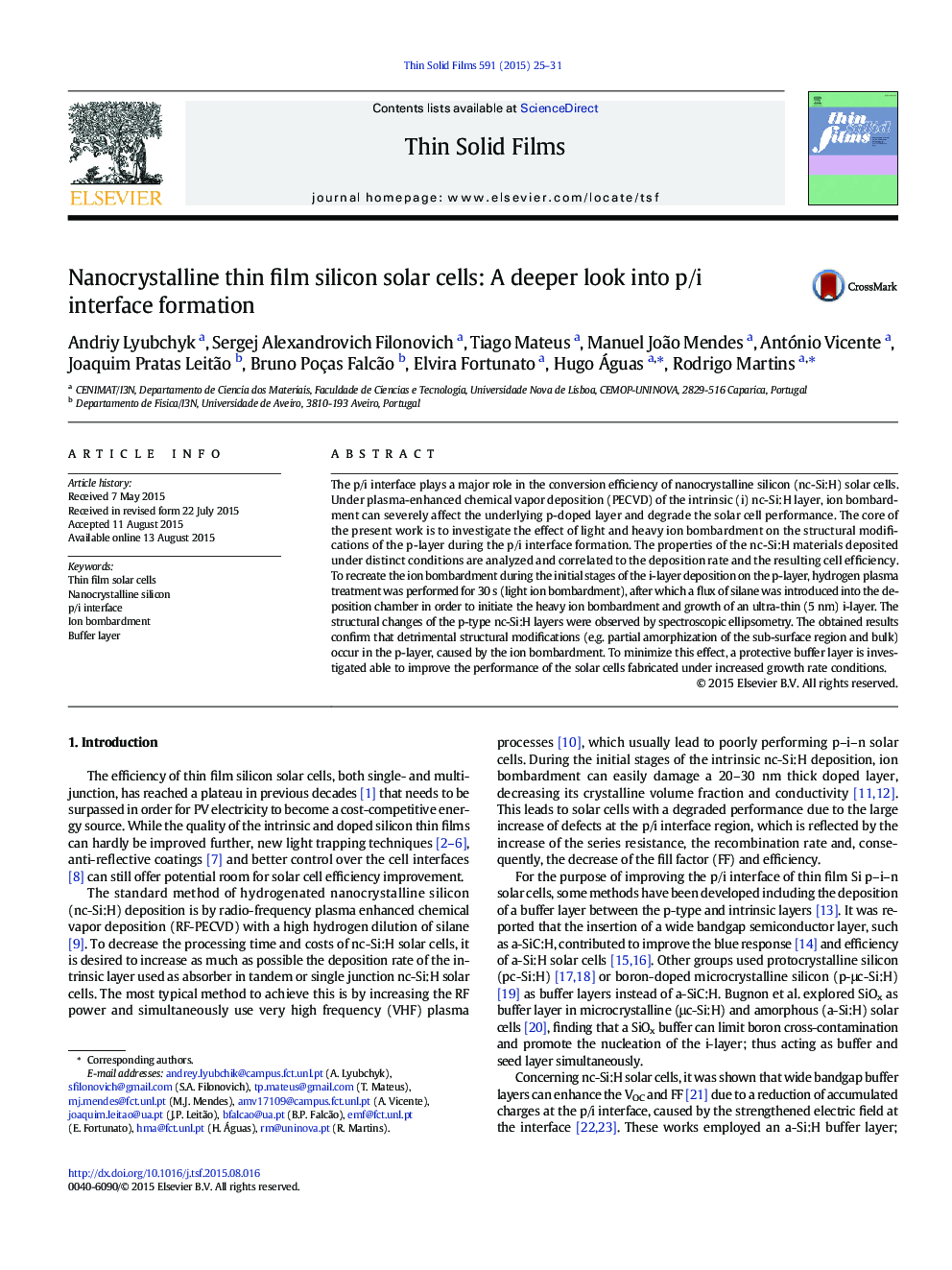| کد مقاله | کد نشریه | سال انتشار | مقاله انگلیسی | نسخه تمام متن |
|---|---|---|---|---|
| 1664590 | 1008763 | 2015 | 7 صفحه PDF | دانلود رایگان |

• We investigate p/i interface nc-silicon solar cells at three different deposition rates.
• Ion bombardment at the slowest deposition rate do not promote changes of p-layer.
• Implemented nc-buffer deposited at softer conditions increase the performance of solar cells deposited at high deposition rates.
• We show the beneficial effects of buffer layer, for a fast processing of the i-layers.
The p/i interface plays a major role in the conversion efficiency of nanocrystalline silicon (nc-Si:H) solar cells. Under plasma-enhanced chemical vapor deposition (PECVD) of the intrinsic (i) nc-Si:H layer, ion bombardment can severely affect the underlying p-doped layer and degrade the solar cell performance. The core of the present work is to investigate the effect of light and heavy ion bombardment on the structural modifications of the p-layer during the p/i interface formation. The properties of the nc-Si:H materials deposited under distinct conditions are analyzed and correlated to the deposition rate and the resulting cell efficiency.To recreate the ion bombardment during the initial stages of the i-layer deposition on the p-layer, hydrogen plasma treatment was performed for 30 s (light ion bombardment), after which a flux of silane was introduced into the deposition chamber in order to initiate the heavy ion bombardment and growth of an ultra-thin (5 nm) i-layer. The structural changes of the p-type nc-Si:H layers were observed by spectroscopic ellipsometry. The obtained results confirm that detrimental structural modifications (e.g. partial amorphization of the sub-surface region and bulk) occur in the p-layer, caused by the ion bombardment. To minimize this effect, a protective buffer layer is investigated able to improve the performance of the solar cells fabricated under increased growth rate conditions.
Journal: Thin Solid Films - Volume 591, Part A, 30 September 2015, Pages 25–31